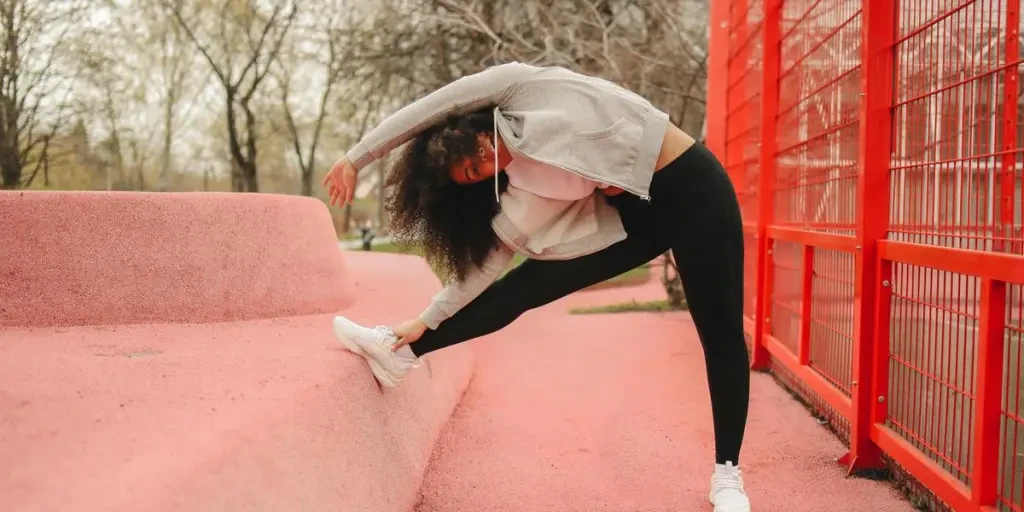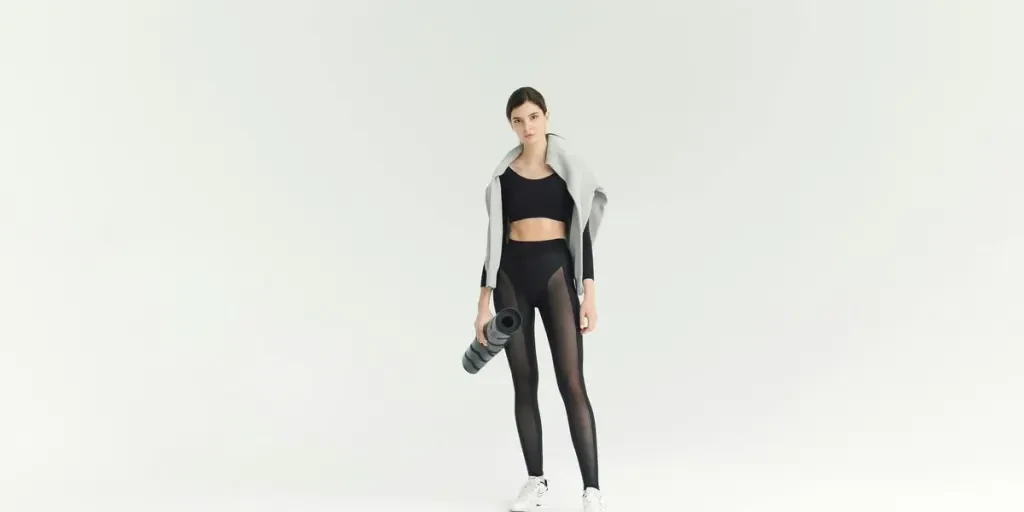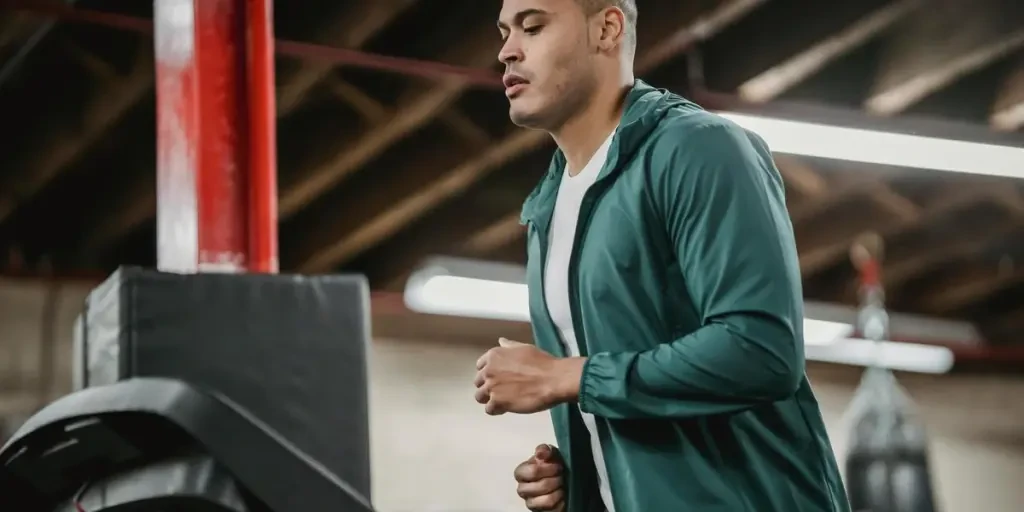Gym jackets have become an essential part of athletic wear, offering both functionality and style. As the demand for fitness apparel continues to grow, gym jackets are emerging as a key trend, driven by advancements in materials, design, and consumer preferences.
Table of Contents:
-Market Overview: The Growing Demand for Gym Jackets
-Innovative Materials and Fabrics for Gym Jackets
-High-Performance Fabrics: Enhancing Athletic Performance
-Sustainable and Eco-Friendly Materials: Meeting Consumer Demand
-Design and Functionality: What Buyers Need to Know
-Trendy Designs: Balancing Style and Function
-Essential Features: Pockets, Zippers, and More
-Seasonality and Cultural Influences on Gym Jacket Trends
-Seasonal Variations: Adapting to Weather Changes
-Cultural Influences: Global Trends and Local Preferences
-Conclusion
Market Overview: The Growing Demand for Gym Jackets

The gym apparel market has seen significant growth in recent years, with gym jackets becoming a standout category. According to Research and Markets, the gym apparel market size grew from $214.08 billion in 2023 to $229.68 billion in 2024, at a compound annual growth rate (CAGR) of 7.3%. This growth is expected to continue, reaching $306.2 billion by 2028, with a CAGR of 7.5%.
Several factors contribute to this robust growth. Increased awareness about fitness and health, the popularization of athleisure trends, and the influence of celebrity endorsements and influencer culture are key drivers. Additionally, technological innovations in the industry and the growth of e-commerce platforms have made gym apparel more accessible to a broader audience.
The growing emphasis on health and fitness is a significant driver of the gym apparel market. As more individuals prioritize their health and fitness goals, there is a surge in engagement with regular exercise routines. Gym jackets play a crucial role in optimizing performance during workouts, with moisture-wicking fabrics ensuring athletes remain dry and comfortable, enabling them to concentrate on their exercises without distractions.
For instance, data from the UK Fitness Report published by PureGym Limited in September 2023 reveals a 2% increase in gym membership in the UK compared to the previous year, with 16% of the population currently being gym members. Additionally, another 16% of individuals have expressed their intention to join a gym in 2024. This growing focus on health and fitness is poised to drive the growth of the gym apparel market.
Companies operating in the gym apparel market are innovating their product offerings by incorporating eco-friendly and sustainable materials, such as organic cotton gym wear, to appeal to environmentally conscious consumers. For example, Adidas AG unveiled a fresh sportswear capsule collection in September 2022, featuring a range of versatile pieces designed with minimalist aesthetics and constructed with a minimum of 50% organic cotton. This collection includes performance running wear for both men and women, showcasing items such as a ribbed dress, staple tee paired with woven trousers, and a coach jacket.
In January 2024, Platinum Equity, LLC, a US-based private equity firm, made a significant acquisition by acquiring Augusta Sportswear Brands (ASB) and Founder Sport Group (FSG). This strategic move merges the capabilities of both companies to expand their sports and lifestyle apparel offerings, enhance customer service, and improve supply chain efficiency. Additionally, it accelerates the adoption of innovative technologies such as sublimation throughout the ecosystem.
Major companies operating in the gym apparel market include Nike Inc., Adidas AG, Under Armour, Inc., Puma SE, Columbia Sportswear Company, New Balance Athletics, Inc., Lululemon Athletica Inc., Fila Holdings Corp., Ralph Lauren Corporation, Iconix International, ASICS Corporation, VF Corporation, Skechers USA, Inc., Anta Sports Products Limited, Li Ning Company Limited, Decathlon Group, Hanesbrands Inc., Mizuno Corporation, The North Face, Inc., Umbro International Limited, Reebok International Limited, Brooks Sports Inc., Iconix International, Reebok International Limited, Patagonia Inc., Karhu Holding BV, and Umbro International Limited.
North America was the largest region in the gym apparel market in 2023, while Asia-Pacific is expected to be the fastest-growing region in the forecast period. The regions covered in the gym apparel market report include Asia-Pacific, Western Europe, Eastern Europe, North America, South America, the Middle East, and Africa. The countries covered in the gym apparel market report are Australia, Brazil, China, France, Germany, India, Indonesia, Japan, Russia, South Korea, the UK, the USA, Canada, Italy, and Spain.
Innovative Materials and Fabrics for Gym Jackets

High-Performance Fabrics: Enhancing Athletic Performance
The evolution of gym jackets has been significantly influenced by the development of high-performance fabrics. These materials are designed to enhance athletic performance by providing superior comfort, flexibility, and durability. According to a professional report, brands like Nike, Adidas, and Lululemon have been at the forefront of incorporating innovative fabrics into their gym jackets. These fabrics often include moisture-wicking properties, which help to keep the body dry by drawing sweat away from the skin. Additionally, they offer breathability, ensuring that athletes remain cool during intense workouts.
One of the standout materials in this category is polyester, which is known for its lightweight and quick-drying properties. Polyester blends, often combined with spandex, provide the necessary stretch and recovery, allowing for a full range of motion. Another notable fabric is nylon, which is highly durable and resistant to abrasion, making it ideal for high-intensity activities. Furthermore, advancements in textile technology have led to the development of fabrics with antimicrobial properties, which help to reduce odor and maintain freshness.
Sustainable and Eco-Friendly Materials: Meeting Consumer Demand
As consumer awareness of environmental issues grows, there is an increasing demand for sustainable and eco-friendly materials in gym jackets. Brands are responding by incorporating recycled and organic materials into their designs. For instance, Adidas has introduced gym jackets made from recycled polyester, which reduces the reliance on virgin materials and minimizes environmental impact. Similarly, Patagonia is known for its commitment to sustainability, using recycled nylon and polyester in its activewear collections.
Organic cotton is another eco-friendly material gaining popularity. It is grown without the use of synthetic pesticides and fertilizers, making it a more sustainable option compared to conventional cotton. Additionally, some brands are exploring the use of innovative materials such as Tencel, a fiber made from sustainably sourced wood pulp. Tencel is not only eco-friendly but also offers excellent moisture management and breathability.
Design and Functionality: What Buyers Need to Know

Trendy Designs: Balancing Style and Function
The design of gym jackets has evolved to balance style and functionality, catering to the modern consumer’s desire for versatile activewear. According to a report, the trend towards athleisure has driven the demand for gym jackets that can seamlessly transition from the gym to everyday wear. Brands like Gymshark and Alo Yoga have capitalized on this trend by offering stylish designs that do not compromise on performance.
One of the key design elements in trendy gym jackets is the use of bold colors and patterns. Vibrant hues and eye-catching prints add a fashionable touch, making these jackets suitable for both workouts and casual outings. Additionally, the incorporation of sleek silhouettes and tailored fits enhances the overall aesthetic, providing a flattering look while ensuring comfort and mobility.
Essential Features: Pockets, Zippers, and More
Functionality is a crucial aspect of gym jacket design, with features such as pockets, zippers, and adjustable elements playing a significant role. Pockets are essential for storing small items like keys, phones, and energy gels, making them a practical addition to any gym jacket. Zippered pockets, in particular, offer added security, ensuring that belongings remain safe during physical activities.
Adjustable features such as drawstrings and elastic cuffs allow for a customizable fit, enhancing comfort and performance. Additionally, ventilation panels and mesh inserts are commonly used to improve breathability, preventing overheating during intense workouts. Reflective elements are another important feature, providing visibility and safety for outdoor activities, especially in low-light conditions.
Seasonality and Cultural Influences on Gym Jacket Trends

Seasonal Variations: Adapting to Weather Changes
Gym jacket trends are heavily influenced by seasonal variations, with different designs and materials being favored depending on the weather. During the colder months, insulated jackets with thermal properties are in high demand. These jackets often feature materials like fleece and down, which provide warmth without adding bulk. Brands like The North Face and Columbia are known for their high-quality insulated gym jackets, which are designed to withstand harsh winter conditions.
In contrast, lightweight and breathable jackets are preferred during the warmer months. These jackets are typically made from moisture-wicking and quick-drying fabrics, ensuring that athletes remain cool and comfortable. Windbreakers and anoraks are popular choices for spring and fall, offering protection against wind and light rain while maintaining breathability.
Cultural Influences: Global Trends and Local Preferences
Cultural influences play a significant role in shaping gym jacket trends, with global trends often being adapted to suit local preferences. For instance, the athleisure trend, which originated in the United States, has gained popularity worldwide, leading to an increased demand for stylish and versatile gym jackets. However, local preferences can vary significantly, with different regions favoring specific styles and features.
In the UK, for example, there is a strong preference for functional and weather-resistant gym jackets, reflecting the country’s often unpredictable weather. Brands like Superdry and Barbour have successfully catered to this market by offering jackets with advanced weatherproofing technologies. In contrast, consumers in warmer climates, such as those in Southern Europe, may prioritize lightweight and breathable designs, with brands like Zara and Mango offering suitable options.
Conclusion
The gym jacket market continues to evolve, driven by advancements in materials, design, and consumer preferences. High-performance fabrics and sustainable materials are at the forefront of this evolution, enhancing both functionality and environmental responsibility. Trendy designs and essential features ensure that gym jackets meet the demands of modern consumers, while seasonal and cultural influences shape the market’s direction.




